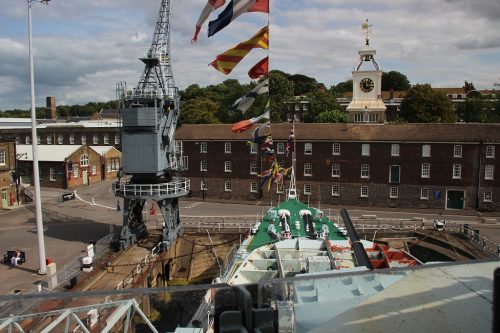
In the wake of the venue’s recent awarding of CPT Coach Friendly status, Gareth Evans visits Chatham Historic Dockyard and finds an attractive destination for coach groups
I first recall learning of the existence of Chatham Historic Dockyard (CHD) when I read a news story about the on-site railway in ‘Heritage Railway’ magazine, a publication I wrote for in a past life.
CHD has been featured extensively as an authentic setting for ‘Call the Midwife’ – the popular TV series which my better half and mother are fans of.
I admit that on many a Sunday evening I would be ‘subjected’ to it while doing work emails on my iPad, but from the corner of my eye, I would look out for the Ensignbus-supplied vintage buses. I unashamedly admit that I too soon gained an appreciation of the series, so it’s a now ‘must watch’ programme for the pair of us.
Fast-forward to early August and I was pleased to hear CHD had been awarded CPT (Confederation of Passenger Transport) Coach Friendly status. Therefore, in late August, accompanied by my parents and my better half, as part of CBW’s ‘Catering for Coaches’ series, I thought it would be interesting to find out what the attraction can offer groups and why it’s gained the prestigious status.[…]
By subscribing you will benefit from:
- Operator & Supplier Profiles
- Face-to-Face Interviews
- Lastest News
- Test Drives and Reviews
- Legal Updates
- Route Focus
- Industry Insider Opinions
- Passenger Perspective
- Vehicle Launches
- and much more!


